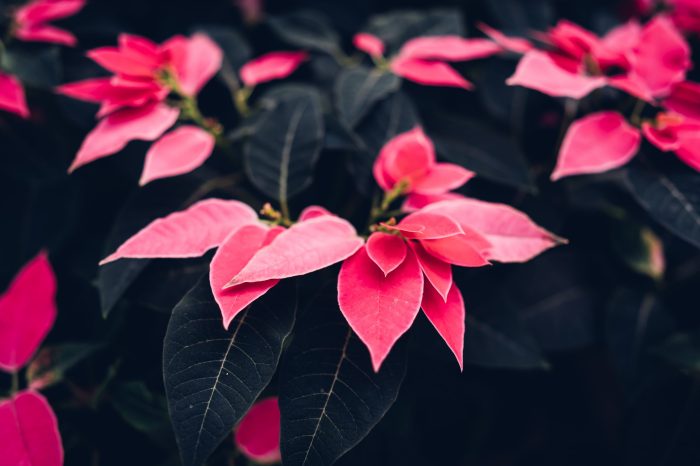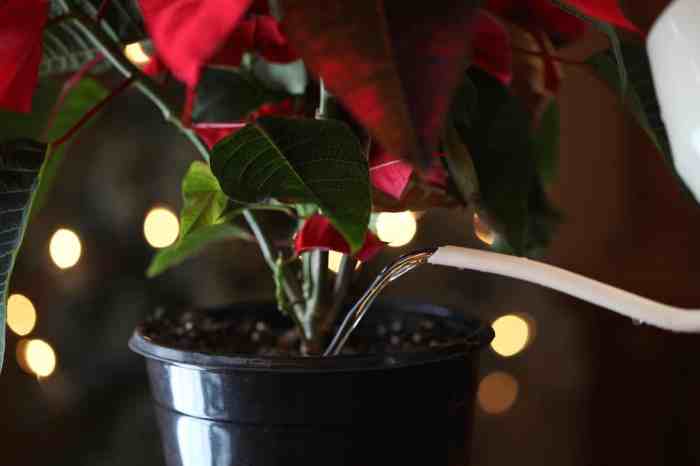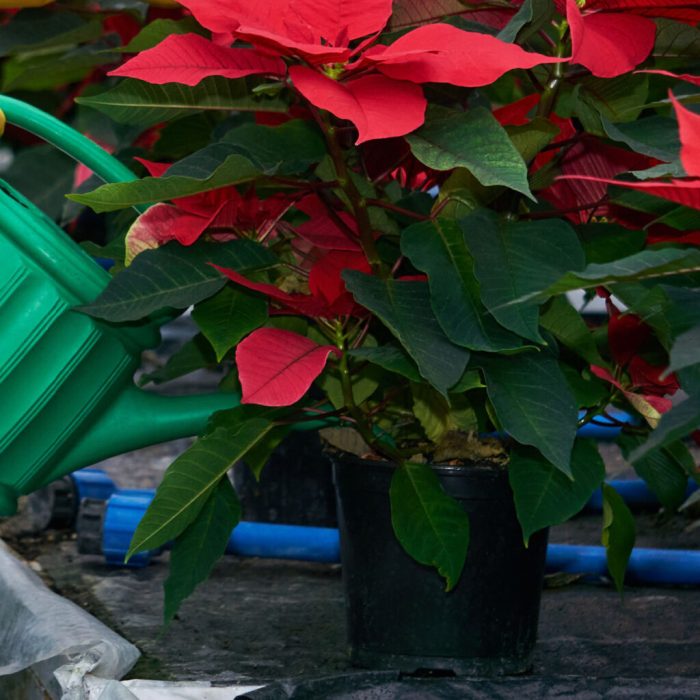How to Water a Poinsettia Plant
Watering Poinsettia Plants: A Comprehensive Guide: How To Water A Poinsettia Plant
How to water a poinsettia plant – Poinsettias, with their vibrant bracts, are beloved holiday plants. However, their proper care, especially watering, is crucial for maintaining their health and festive appearance. This guide provides a detailed approach to watering your poinsettia, ensuring its longevity and beauty.
Watering Frequency for Poinsettia Plants
The ideal watering schedule for poinsettias depends on several factors: the season, the environment (indoor or outdoor), the pot size, and the type of soil. Overwatering and underwatering are both detrimental to the plant’s health.
Underwatering leads to wilting, drooping leaves, and dry soil. Overwatering, on the other hand, can cause yellowing leaves, root rot, and a generally unhealthy appearance. Larger pots retain moisture longer than smaller ones, while well-draining soil allows for more frequent watering compared to dense, poorly draining soil.
| Environment | Season | Watering Frequency | Soil Moisture Check |
|---|---|---|---|
| Indoor | Summer | Every 2-3 days | Check top inch of soil; water when dry |
| Indoor | Winter | Every 5-7 days | Check top 2 inches of soil; water when dry |
| Outdoor (shaded) | Summer | Every 1-2 days | Check top inch of soil; water when dry |
| Outdoor (shaded) | Winter | Every 3-5 days (if no rain) | Check top 2 inches of soil; water when dry |
Proper Watering Techniques

Source: myplantgrow.com
Watering poinsettias correctly involves more than just pouring water onto the soil. Avoiding wetting the leaves is crucial to prevent fungal diseases. Using lukewarm water helps the plant absorb the water more efficiently.
- Water gently at the base of the plant, avoiding the leaves.
- Use lukewarm water (room temperature).
- Check the soil moisture before watering: stick your finger about an inch into the soil. If it feels dry, it’s time to water.
- Bottom-watering: Place the pot in a tray filled with a few inches of water and let the plant absorb water from the bottom for about 30 minutes. This method ensures even watering and prevents overwatering.
Soil Considerations for Poinsettia Watering

Source: farmhouseandblooms.com
The ideal soil for poinsettias is a well-draining potting mix that retains some moisture. Well-draining soil prevents waterlogging and subsequent root rot, a common problem for poinsettias.
- Ideal Soil: A peat-based potting mix with perlite or vermiculite added for improved drainage.
- Drainage Check: Check for drainage holes in the bottom of the pot. If water sits in the saucer after watering, the drainage may be inadequate.
- Creating a Suitable Soil Mix: Combine 2 parts peat moss, 1 part perlite, and 1 part vermiculite. This mixture provides excellent drainage and moisture retention.
Environmental Factors Affecting Watering Needs, How to water a poinsettia plant
Temperature, humidity, and light levels all influence a poinsettia’s water requirements. Indoor poinsettias generally need less frequent watering than those grown outdoors, especially during winter.
- Temperature: Warmer temperatures increase evaporation, requiring more frequent watering.
- Humidity: Low humidity increases evaporation, necessitating more frequent watering.
- Light Levels: Bright, indirect light increases the plant’s water needs.
- Indoor vs. Outdoor: Outdoor plants, especially during summer, may require daily watering due to higher temperatures and sunlight exposure. Indoor plants in a dry, centrally heated room might need watering less often.
Troubleshooting Watering Issues

Source: thisismygarden.com
Improper watering can lead to various problems. Recognizing the signs of underwatering and overwatering is key to taking corrective action.
Proper poinsettia watering involves keeping the soil consistently moist but not soggy. Overwatering can lead to root rot, a common problem. Interestingly, a similar principle applies when starting an avocado plant; you’ll want to ensure the seed doesn’t dry out while learning how to plant avocado seeds in water. Returning to poinsettias, allowing the top inch of soil to dry slightly between waterings is generally recommended for healthy growth.
- Underwatering: Wilting, drooping leaves, dry soil. Solution: Water thoroughly until water drains from the drainage holes.
- Overwatering: Yellowing leaves, soggy soil, root rot. Solution: Allow the soil to dry out completely before watering again. Consider repotting in fresh, well-draining soil if root rot is suspected.
- Preventative Measures: Use a well-draining potting mix, check soil moisture before watering, and avoid overwatering.
Visual Guide to Watering Poinsettia Plants
A healthy, well-watered poinsettia displays vibrant green leaves, firm to the touch, and an overall vigorous appearance. The bracts are bright and colorful. Signs of underwatering include wilting, drooping leaves, and dry, crumbly soil. Overwatering manifests as yellowing leaves, soggy soil, and possibly a foul odor from the soil indicating root rot.
A properly watered poinsettia will have firm, upright leaves with a rich, deep green color. The soil will be moist but not soggy to the touch, and the plant will exhibit a healthy, upright posture. The bracts will be bright and vibrant.
Quick FAQs
Can I use tap water for my poinsettia?
It’s best to use lukewarm, filtered water or let tap water sit out for 24 hours to allow chlorine to dissipate. Chlorine can harm the plant.
How often should I fertilize my poinsettia?
Fertilize your poinsettia sparingly, only during its active growing season (spring and summer), using a balanced liquid fertilizer diluted to half strength.
My poinsettia leaves are dropping. What should I do?
Leaf drop can indicate underwatering, overwatering, or temperature fluctuations. Check the soil moisture, adjust watering accordingly, and ensure the plant is in a stable temperature range.
What should I do with my poinsettia after the holidays?
After the holidays, gradually reduce watering and allow the soil to dry slightly between waterings. You can prune it back slightly in spring to encourage bushier growth.




















